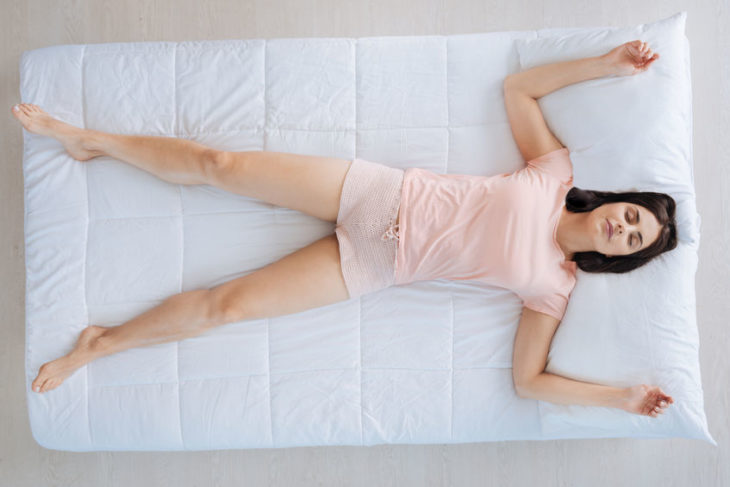While sleeping on the stomach, back, and side are the most common positions for nighttime slumber, many variations exist. Since some postures are better for the body and health than others, it’s important for people to research them and attempt to change if necessary. Below are descriptions of several of the most common options and the pros and cons of each one.
Sleeping in the Fetal Position

Source: Glamour
Approximately 40 percent of the population, which includes twice as many women than men, favor this sleeping position. As the name suggests, it involves pulling the arms and legs in an upward motion towards the body much like unborn babies do inside of their mother’s womb.
Slumber in the fetal position offers several important health benefits such as allowing the spine to rest in its natural alignment. Medical research also indicates that this alternative may help prevent neurological diseases such as Alzheimer’s and Parkinson’s much better than sleeping on the back or stomach can do. It can also help to improve circulation for pregnant women.
Unfortunately, snoozing in this position too tightly night after night can cause damage to the diaphragm and lungs by putting too much pressure on them. Stretching out before bed and attempting not to lay at night with the legs and arms pulled so tightly can preserve the benefits of the fetal posture while also reducing the risks.
Soldier and Starfish Positions

Source: Il Mondo delle Donne
Someone who rests in the soldier position prefers to lie flat on his or her back with arms right by the side. This isn’t the best way to doze for people prone to sleep apnea or heavy snoring. Prolonged heavy snoring can cause issues such as reduced blood flow to the neck, face, and brain. With sleep apnea, the individual stops breathing for up to several seconds many times each night. This can lead to a host of health issues as well.
The soldier is also notorious for causing people to wake up with a stiff back. On the plus side, it can bring significant relief for people with acid reflux problems. Placing a pillow or rolled up towel under the legs can alleviate back pain and other common issues associated with this body alignment.
Laying like a starfish is a slight variation on the soldier posse. Instead of lying with arms and legs flat, the individual spreads the legs out and bends his or her arms near the head. Modifications to this option can reduce the risk of heavy snoring or sleep apnea.
How to Change Positions

Source: SleepHelp
Changing sleep position can be difficult, especially for people who don’t know how they slumber in the first place. According to Beddr, a sleep technology company, those who want to avoid rolling on their backs should fill a tube sock with tennis balls and place it under a t-shirt near the spine.
Investing in a contoured yoga pillow can help force people to rest on their side if that would be better for their health. However, consulting a specialist for more customized options is the best way to improve health issues caused by how your body is aligned at nighttime.
